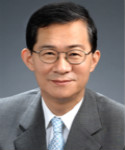| Biography | |
|---|---|
 Prof. YoungPak Lee Hanyang University, Republic of Korea |
|
| Title: Metamaterial perfect absorbers to be controlled for the bandwidth: multi/broad/tailored | |
| Abstract: Perfect absorbers electromagnetic (EM) wave, including microwave, by using metamaterials (MMs) have been studies extensively these days for the potential or immediate applications. We are investigating advanced meta-structures and MMs for EM-wave absorption, MM technology for EM-wave absorption over 99% and multi/ultrawide/tailored-band absorption, and MMs for EM-wave absorption independent of incident angle and polarization. Recently, we proposed a new EM MM with a tailored bandwidth. The absorption turned out to be insensitive to the polarization of incident EM wave, and maintained to be greatly high even at a large incident angle such as 45 degrees. The absorption band could be adjusted easily with the parameters of a simple structure, and the absorber itself was also flexible, which is excellent for the practical applications. We expect that the design concept provides a new candidate for some fields where the absorption bandwidth is required specifically, and this suggested absorber can be applied in many practical fields, additionally because of the low cost and superior performance. Flexible and ultrathin wide-band MM absorbers were also suggested and demonstrated in the MHz/GHz-frequency range. By using resonators of different sizes and conductive fibers on metallic-pattern layer, the total thickness of MM absorber was reduced. The experimental absorption band over 97% was 0.87-6.11 GHz. This innovation is expected to contribute to the flexible microwave/electronic devices in the near future, and offers a different approach to realize the potential wearable meta-devices by using these ultrathin broadband MM absorbers. | |
| Biography: YoungPak Lee received his B. S. degree from Seoul National University, Korea, in 1975, and the Ph. D. degree in experimental condensed-matter physics in 1987 from Iowa State University, U. S. A. His research involved study on magneto-optical, magnetic, optical and transport properties, and electronic structures of thin films and nanostructures, characterization of the surfaces and interfaces of thin films including multilayers, vacuum science, and so forth since his Ph. D. degree. After many careers in U. S. A., Japan, Germany and Korea, he is now former President of the Korean Physical Society, former President of the Korean Federation of Basic-science, Distinguished Professor, Physics Department of Hanyang University, and Director of Quantum Photonic Science Research Center, Seoul, Korea, which exploited the convergence research of magnetism and optical science. Prof. Lee is also Member of Korea Academy of Science and Technology, Council of Association of Asia-Pacific Physical Societies, Honorary Member of National Academy of Sciences of Ukraine, Distinguished Visiting Professor of Aix-Marseille Univ. (France) and Edith Cowan Univ. (Australia), Guest Distinguished Professor / Professor of 7 Chinese Universities and Institutes, Scientific Advisor of Scientific Council of Materials Science of Vietnamese Academy of Science and Technology. His current investigations include metamaterials and spin-photonic crystals, nanoscopic investigation of morphology and magnetic domain, and magnetic semiconductors based on oxides. He has published 640 SCI papers (the total published number of papers : 750 papers) as of December 2014. Because of these achievements, he has received many kinds of awards (48 awards as of December 2014), including the highest-level Award from the Korean Physical Society (2014), Award by the Korean Minister of Education, Science and Technology (2009), Award by the Korean Minister of Science and Technology (1992), and various academic-paper awards and academic-achievement awards. Based on these recognitions, he was also selected as one of the 'Korean Scientists for the 21st Century' by a main national broadcasting company in 2007. He has led the globalization of Korean physics, based on the leadership in the research on quantum photonic science. So far, he has established the global collaboration network with 42 organizations in 15 countries, including the U. S. A. and China. | |
